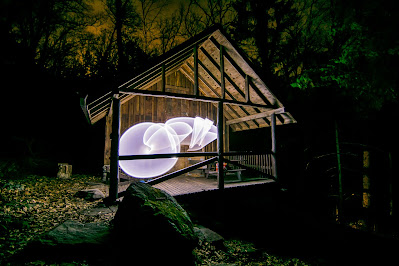Shutter Speed
Understanding Shutter Speed
Shutter speed is one of the most important keys to taking a good picture and also being creative with different styles of photography. I'm going to explain shutter speed simply and effectively so you can use it and change it with confidence.
 |
| 10 seconds f/2.8 100 iso |
 |
| 1/2000 f/5.6 250 iso |
The Science:
The shutter is what controls how much light reaches the sensor or film in a camera. The speed refers to the amount of time the shutter is open to let light in and create the photo. The longer the shutter is open, the more light comes in, but movement can be blurred as well. A shorter shutter speed captures the precise moment and shows no movement but doesn't allow much light to reach the camera and may turn out dark. Your camera also vibrates slightly when you hold it so a longer shutter speed may be blurry unless you use a tripod or stabilize the camera. Some cameras have built in stabilizers to allow longer shutter speeds that aren't affected by camera vibrations. Now I'll break down shutter speeds into three categories:
 |
| 1/13 second f/16 100 iso |
 |
| 1/2000 second f/2.8 100 iso |
Quick Shutter Speeds: 1/8000-1/300 second
This is when the shutter is open for just a fraction of a second, not allowing much light to the sensor. In bright situations, this is fine. It also helps when you have better lenses with a lower f/stop to allow more light in to the sensor as well. In darker situations, not enough light will be there to create a picture and the photo will be dark. In all situations, these shutter speeds will capture the precise moment in time: all the drops on the waves or a quick moving object with no blur. The quicker the shutter speeds, the more action will be frozen and quick moving objects can be captured. Quick shutter speeds like these are not affected by camera shake at all.
 |
| 1/320 second f/2.8 100 iso |
 |
| 1/320 second f/2.8 100 iso with exposure added in editing |
Medium Shutter Speeds: 1/300-1/10 second
This is the middle ground of shutter speeds for most cameras and generally the most popular for taking general pictures. With modern cameras, these shutter speeds are affected by camera shake very minimally if at all. They usually allow enough light in for most picture taking, in most conditions. These speeds will capture all but the quickest moving objects in a picture. But on a bright day, even 1/300th of a second will allow too much light to the sensor and make the whole picture white. And a person riding a bike will be blurry if your shutter speed is 1/10th of a second.
 | ||
1/60 f/4.0 5000 iso
|
Long Shutter Speeds: 1/5-30 seconds or longer
For night photography and a lot of the artistic light painting photography, a long shutter speed and a tripod are essential. This is where a lot of the "art" of photography comes from. A lot of light will be allowed to get to the sensor but a lot of motion will be shown as well. On a 20 second exposure on a dark night, you will capture many of the stars in the sky, but if you look closely you will even see some of the motion from the earth's rotation! An object moving while a 1/5 second picture is taken will appear blurry but some do like this effect as it shows motion.
Panning:
Panning is capturing a moving object while the camera is moving at the same speed. This allows the object to be captured very precisely, as if a very fast shutter speed was used, but the background will be blurry from the motion. This technique is an art in itself and one that I have not yet mastered. It involves experimentation with different shutter speeds for different situations but I usually start around 1/60. Mark Galer is a master of this technique and you can watch a video about it here.
 |
| 1/320 second f/1.8 100 iso Would have been better if I moved the camera faster with a faster shutter speed. |
Putting it all together:
There are a lot more details to shutter speed than I could address in this space, but these are the basics. When the shutter is open longer it allows more light, but also blurs if moving. A quick shutter speed captures the action but doesn't allow much light to the sensor. A tripod helps stabilize the camera for longer shutter speeds, but also realize that if something is moving in the frame it will still be blurry.
Shutter speed is one of the three major factors that will determine how your picture looks, the other two are aperture (f/stop) and ISO which I will discuss in future entries and then put them all together at the end. Let me know what questions you may have and I'll be happy to answer them and add information as needed.



Comments
Post a Comment